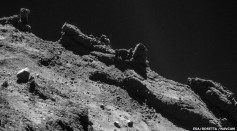molecules

Energy Harvesting Device Captures Power From Liquid Molecules To Generate Electricity on the Nanoscale
Algorithm Can Predict Behavior of Unknown Molecules to Speed Up Discovery of New Medicine
Intricate Organic Molecules—Yeah, We Can 3D Print That

Philae Lander Reveals Organic Molecules on Comet 67P
Most Popular

How Technology Is Changing the Real Estate Industry?

How a Plant-Based Diet Can Protect Against Breast Cancer: Insights from Nutrition Research

Study Reveals High Turnover in Scientific Research Careers: What This Means for Future Scientists

Why It's So Difficult to Lose Weight: The Biological Explanation Behind Obesity






